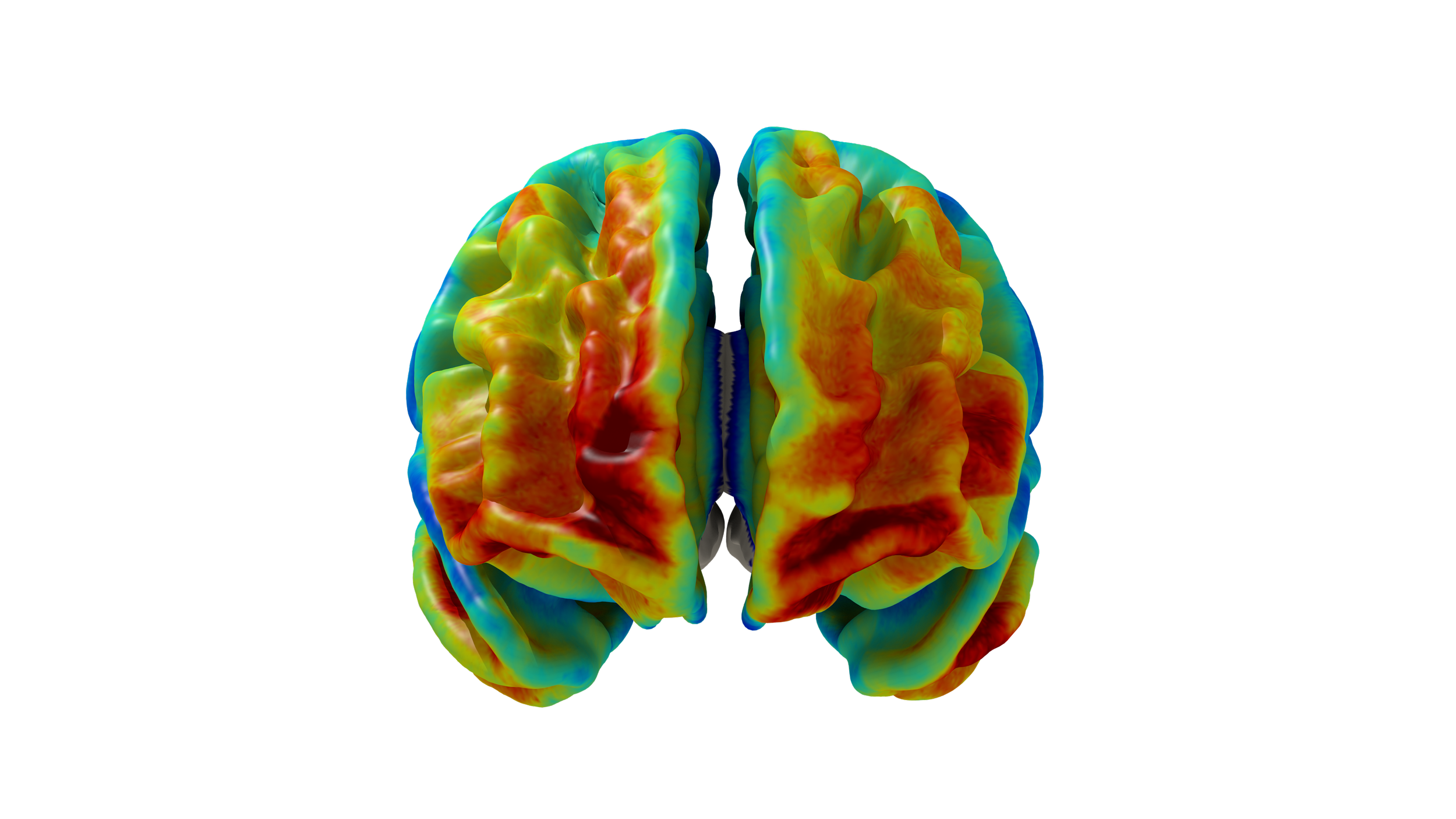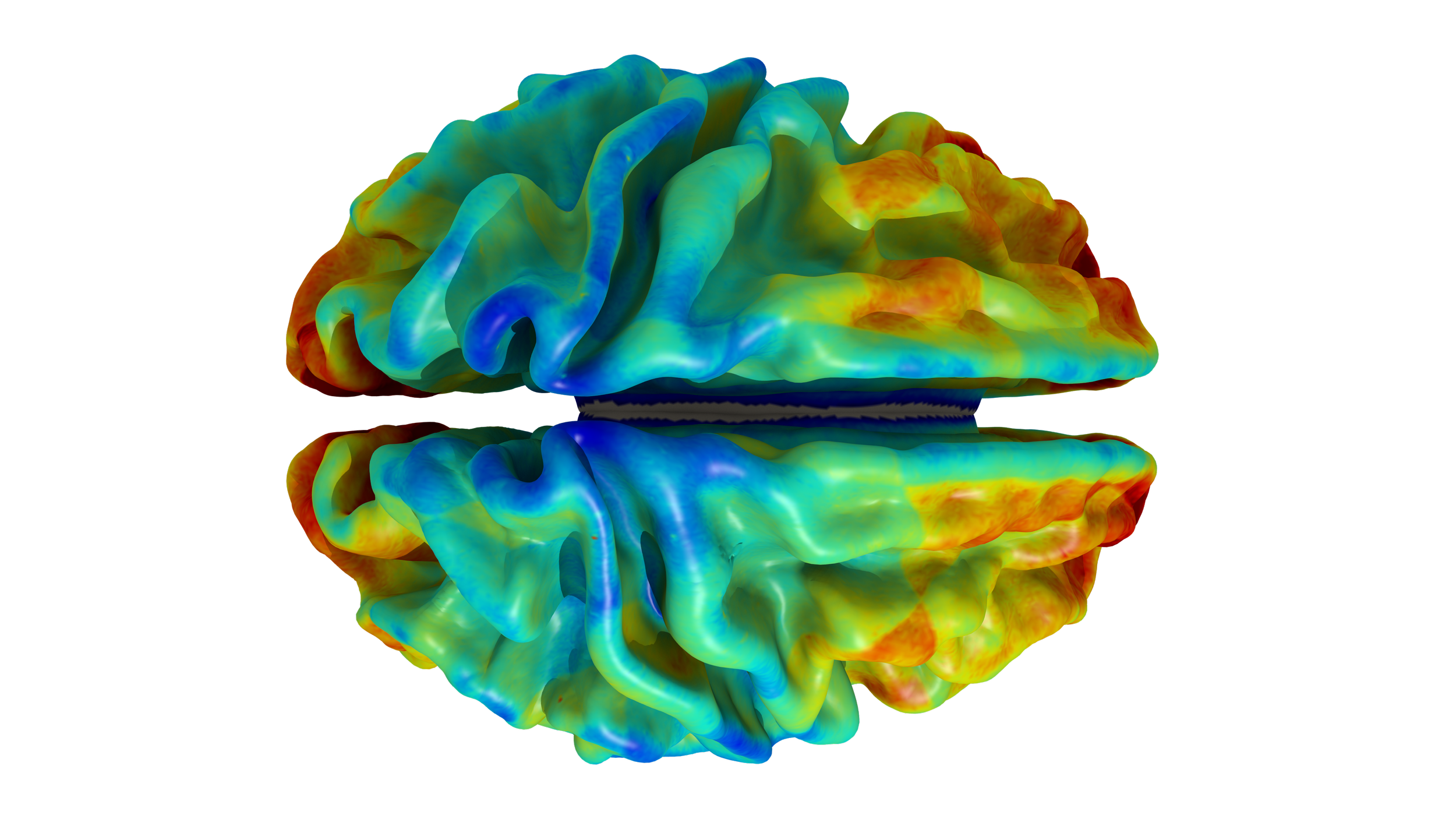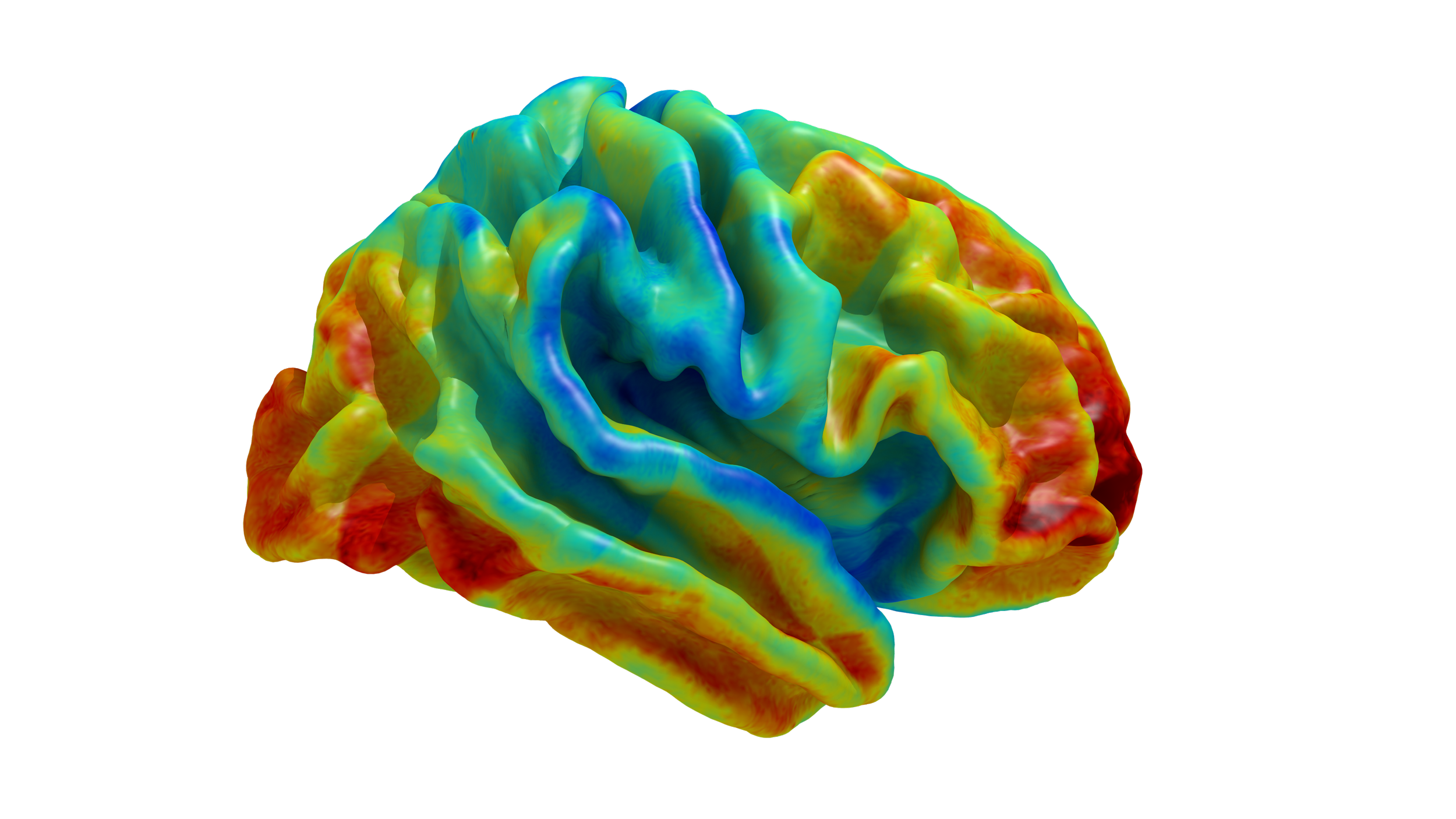
PONS: The Centre for Population Neuroscience and Precision Medicine
We aim to establish and analyse a big neuroimaging genetic datasets to precisely identify psychological disorders
Our Philosophy
The Centre for Population Neuroscience and Precision Medicine (PONS) is dedicated to advancing our understanding of the intricate interplay between neurobiology, genetics, and environmental factors that contribute to behavioral patterns and mental health. Our primary goal is to leverage neuroimaging genetic datasets, employing precise analysis techniques, to unravel the underlying mechanisms in the brain. This includes identifying the genetic and environmental mediators influencing behavior, enabling accurate prediction and targeted stratification of mental disorders.

By discerning the impact of environmental factors on mental health, PONS strives to develop tailored behavioral interventions, thereby contributing to overall population-based health improvement. Our research delves into the intricate relationships between the environment and causal brain mechanisms, shedding light on both the risks and resilience against environmental adversity.
PONS is actively crafting inventive solutions to understand the biological foundations of dysfunctional behavior and mental disorders, aiming to tackle these issues on a global scale. The PONS Centre is based at the Department of Psychiatry and Clinical Neuroscience at Charite and the Institute for Science and Technology of Brain-inspired Intelligence (ISTBI) at Fudan University, Shanghai.

Clinical Focus
-
Represents a paradigm shift in mental health care, emphasizing personalized treatment approaches based on individual characteristics. This innovative framework integrates various factors such as genetics, biomarkers, and environmental influences to tailor interventions to specific patient needs. By stratifying psychiatric disorders into distinct subtypes, clinicians can optimize treatment efficacy and outcomes. This approach holds promise for advancing precision medicine in psychiatry, offering new avenues for targeted therapies and improved patient outcomes.
-
Refers to the collective psychological well-being of a community or society as a whole. It encompasses the mental health status, challenges, and needs of diverse populations within a given region or demographic. Understanding population mental health involves examining factors such as social determinants, access to mental health services, prevalence of mental illness, and overall mental health literacy within a population. Strategies aimed at improving population mental health may include public awareness campaigns, policy interventions to address social inequalities, community-based mental health programs, and initiatives to reduce stigma surrounding mental illness. Prioritizing population mental health is essential for promoting resilience, fostering social cohesion, and enhancing the overall quality of life for individuals and communities alike.
-
Also known as precision medicine, revolutionizes healthcare by tailoring medical treatment and interventions to individual characteristics, including genetic makeup, lifestyle, and environmental factors. This approach contrasts with traditional one-size-fits-all treatments, instead offering targeted therapies that maximize efficacy and minimize side effects. Personalized medicine leverages advancements in genomic sequencing, biomarker identification, and data analytics to inform treatment decisions, leading to more accurate diagnoses and better patient outcomes. By understanding the unique genetic and biological profiles of patients, healthcare providers can design customized treatment plans that address specific disease mechanisms and patient needs. Embracing personalized medicine holds the promise of transforming healthcare delivery, ushering in an era of more precise, effective, and patient-centered care.
-
Refers to the shared symptoms or features observed across different psychiatric disorders. Rather than viewing mental illnesses as distinct entities, this concept recognizes overlapping symptoms and underlying mechanisms among various disorders. For example, symptoms such as anxiety, depression, or cognitive impairments may manifest across multiple psychiatric conditions, including mood disorders, anxiety disorders, and schizophrenia spectrum disorders. Understanding cross-disorder symptomology is crucial for accurate diagnosis, treatment planning, and research efforts in psychiatry. By recognizing commonalities among disorders, clinicians can develop more comprehensive assessment tools, tailor interventions to address shared symptoms, and advance the development of novel treatments targeting underlying mechanisms that transcend diagnostic boundaries.
-
Two common mental health conditions that often co-occur and share overlapping symptoms, yet they also have distinct features.
Depression, clinically known as major depressive disorder (MDD), is characterized by persistent feelings of sadness, hopelessness, and loss of interest or pleasure in activities. Other symptoms may include changes in appetite or weight, sleep disturbances, fatigue, difficulty concentrating, and thoughts of self-harm or suicide.
Anxiety disorders encompass a range of conditions, including generalized anxiety disorder (GAD), panic disorder, social anxiety disorder, and specific phobias. They involve excessive worry, fear, or apprehension about everyday situations, which can interfere with daily functioning. Physical symptoms such as restlessness, muscle tension, irritability, and difficulty sleeping are also common.
While depression and anxiety disorders share symptoms such as sleep disturbances and difficulty concentrating, they differ in their primary emotional experiences. Depression primarily involves feelings of sadness and hopelessness, whereas anxiety disorders are characterized by excessive worry and fear. However, it's not uncommon for individuals to experience both depression and anxiety simultaneously, leading to what's known as comorbid depression and anxiety.
Treatment for depression and anxiety disorders often involves a combination of psychotherapy, medication, lifestyle modifications, and support from mental health professionals. Cognitive-behavioral therapy (CBT), antidepressant medications, and relaxation techniques are commonly used interventions that can help individuals manage symptoms and improve their quality of life. Early intervention and ongoing support are essential for effectively managing these conditions and reducing their impact on daily functioning.
-
Mental health conditions characterized by abnormal eating habits and a distorted body image. Anorexia nervosa involves severe food restriction, bulimia nervosa includes binge eating followed by purging behaviors, and binge-eating disorder entails consuming large amounts of food in a short period. These disorders can have serious physical and psychological consequences and require a combination of medical and psychological treatment for management.
-
Refers to Substance Use Disorder (SUD) or Alcohol Use Disorder (AUD). Both are mental health conditions characterized by problematic use of substances like Drugs or alcohol, leading to significant impairment in daily functioning and relationships. Treatment typically involves a combination of therapy, medication, and support groups to help individuals manage cravings, address underlying issues, and achieve recovery.
-
The relationship between the environment and mental health is multifaceted, with various environmental factors influencing psychological well-being. Environmental elements such as access to green spaces, air and water quality, noise levels, housing conditions, and community safety can all impact mental health outcomes.
Positive environmental factors, such as spending time in nature or living in neighborhoods with ample green spaces, have been associated with lower levels of stress, anxiety, and depression. Access to natural environments can promote relaxation, improve mood, and enhance overall mental well-being.
Conversely, exposure to environmental stressors like pollution, noise pollution, overcrowding, and unsafe living conditions can exacerbate mental health issues. Chronic exposure to environmental stressors may contribute to increased levels of anxiety, depression, and other mental health disorders.
Additionally, socio-economic factors intertwined with the environment, such as access to quality education, employment opportunities, and social support networks, can profoundly impact mental health outcomes. Disadvantaged or marginalized communities often face greater exposure to environmental stressors and have fewer resources to cope with their effects, leading to disparities in mental health.
Understanding the interplay between the environment and mental health is essential for developing holistic approaches to promoting well-being. Interventions aimed at improving environmental conditions, increasing access to green spaces, reducing pollution, and addressing socio-economic inequalities can contribute to better mental health outcomes for individuals and communities alike.
Methods
-
Refers to sophisticated techniques that combine multiple imaging methods to study the brain's structure and function simultaneously. Structural neuroimaging includes techniques like Magnetic Resonance Imaging (MRI) and Diffusion Tensor Imaging (DTI), which provide detailed images of the brain's anatomy and its white matter tracts. Functional neuroimaging includes methods such as functional MRI (fMRI) and Positron Emission Tomography (PET), which measure brain activity by detecting changes in blood flow, metabolism, or neurotransmitter levels.
-
Involves the use of satellite-based sensors to collect data about the Earth's surface, particularly focusing on environmental and urban areas. This technology employs various types of sensors, including optical, infrared, and radar, to capture detailed images and measurements of the land, atmosphere, and oceans from space.
In environmental profiling, remote sensing satellites monitor and analyze natural resources, vegetation cover, land use changes, water bodies, and weather patterns. They provide critical data for understanding climate change, deforestation, pollution, and natural disasters such as floods, hurricanes, and wildfires. This information helps in managing natural resources, conserving biodiversity, and formulating environmental policies.
-
Refers to the use of digital technologies to evaluate and monitor an individual's health and well-being. This includes a wide range of tools and methods, such as wearable devices, mobile health apps, telemedicine platforms, and electronic health records (EHRs). These technologies collect and analyze health-related data, providing insights into various health parameters like physical activity, heart rate, blood pressure, glucose levels, sleep patterns, and mental health status.
Wearable devices, such as fitness trackers and smartwatches, continuously monitor physiological metrics and provide real-time feedback to users. Mobile health apps can track dietary habits, medication adherence, and symptom management. Telemedicine platforms enable remote consultations with healthcare professionals, facilitating access to medical advice and treatment without the need for in-person visits. EHRs digitize patients' medical histories, making it easier to share information across different healthcare providers and ensuring continuity of care.
-
A comprehensive field of study that explores the intricate processes through which genetic information encoded in DNA is translated into functional proteins, and how these proteins interact within biological systems. This multidisciplinary approach encompasses several 'omics' technologies, including genomics, transcriptomics, proteomics, and interactomics.
Genomics: This involves the study of an organism's complete set of DNA, including all of its genes. Genomic sequencing identifies the order of base pairs in the DNA, providing a blueprint of the genetic instructions.
Transcriptomics: This focuses on the study of RNA transcripts produced by the genome. Through techniques like RNA sequencing, researchers can determine which genes are being expressed, to what extent, and under what conditions. This step reflects how genetic information is transcribed into messenger RNA (mRNA).
Proteomics: This is the large-scale study of proteins, the end products of gene expression. Proteomics aims to identify and quantify all the proteins in a cell, tissue, or organism, and to understand their functions and interactions. Techniques like mass spectrometry and protein microarrays are used to analyze the protein content.
Interactomics: This examines the interactions between proteins and other molecules within the cell. By mapping out these interactions, scientists can understand the complex networks that underpin cellular functions and how they are affected by changes in the proteome.
By integrating data from these various 'omics' fields, researchers can gain a holistic understanding of how genetic information flows from DNA to RNA to proteins and how these molecules interact to carry out cellular processes. This comprehensive approach is crucial for understanding the molecular basis of diseases, identifying biomarkers for diagnosis and prognosis, and developing targeted therapies.
-
The study and analysis of physical movement patterns of individuals or groups. This can be applied in various fields including healthcare, sports science, urban planning, and security. Movement profiling involves the collection and interpretation of data related to how entities move through space and time. Key technologies used in movement profiling include GPS, accelerometers, motion capture systems, and video analysis.
Healthcare: In healthcare, movement profiling can be used to monitor patients' mobility, detect movement disorders, and evaluate the effectiveness of treatments or rehabilitation programs. For example, wearable devices and motion sensors can track the gait and posture of patients with Parkinson's disease, providing valuable data for personalized treatment plans.
Sports Science: Athletes' movements can be analyzed to improve performance and prevent injuries. By using motion capture technology and wearable sensors, detailed data on an athlete's biomechanics can be gathered. This information helps in optimizing training regimens, enhancing techniques, and identifying potential injury risks.
Urban Planning: Understanding how people move through urban environments is essential for designing efficient and user-friendly cities. Movement profiling can inform the planning of transportation systems, public spaces, and infrastructure. Data from mobile devices, traffic cameras, and public transport systems can be analyzed to understand patterns of human movement and congestion points.
Security: In security, movement profiling helps in monitoring and analyzing the movements of individuals to detect suspicious behavior or enhance crowd management. For example, video surveillance systems and facial recognition technologies can be used to track and profile the movements of people in public spaces to ensure safety and security.
Movement profiling provides valuable insights by capturing and analyzing data related to how entities navigate their environment. This information can be used to enhance health outcomes, improve performance in sports, design better urban spaces, and ensure security and safety.
-
Evolving fields of computer science focused on creating systems that can perform tasks typically requiring human intelligence. While closely related, these terms refer to different aspects of intelligent systems.
Artificial Intelligence (AI): AI is the broader concept of machines being able to carry out tasks in a way that we would consider "smart." It encompasses a wide range of techniques and approaches designed to simulate human intelligence. AI systems can perform tasks such as learning, reasoning, problem-solving, perception, and language understanding. AI is categorized into narrow AI (designed for specific tasks, like virtual assistants) and general AI (a still theoretical, all-encompassing intelligence like humans possess).
Machine Learning (ML): ML is a subset of AI that focuses on the development of algorithms and statistical models that enable computers to learn from and make predictions or decisions based on data. Instead of being explicitly programmed to perform a task, ML systems improve their performance as they are exposed to more data. Common ML techniques include supervised learning, unsupervised learning, semi-supervised learning, and reinforcement learning.
-
Is an advanced approach in neuroscience and computational biology that involves creating a highly detailed and dynamic digital replica of the human brain. This concept merges the principles of digital twin technology with brain simulation, aiming to replicate the brain's structure and function in a virtual environment. Digital TwinBrain can be used for research, medical diagnosis, treatment planning, and the development of brain-computer interfaces.
Key Components and Technologies:
Digital Twin Technology: This technology creates a digital replica of a physical entity, capturing its state and behavior. For the brain, this involves mapping its anatomical structures, neural connections, and dynamic processes.
Neuroimaging Data: High-resolution neuroimaging techniques like MRI, fMRI, PET, and DTI provide detailed anatomical and functional data. These imaging techniques help in constructing accurate models of the brain's structure and activity.
Computational Models: Mathematical and computational models simulate the electrical and chemical processes of the brain. These models incorporate data on neural networks, synaptic connectivity, and neurotransmitter dynamics.
Machine Learning and AI: Advanced algorithms analyze vast amounts of neuroimaging and experimental data to refine the brain model. Machine learning helps predict neural behavior, optimize simulations, and enhance model accuracy.
High-Performance Computing: Simulating a brain's complex functions requires significant computational power. High-performance computing platforms and cloud computing resources enable real-time simulations and data processing.
-
COINSTAC (Collaborative Informatics and Neuroimaging Suite Toolkit for Anonymous Computation) is an open-source platform designed to enable collaborative data analysis across multiple sites while maintaining data privacy and security. It facilitates data federation, which involves integrating data from disparate sources without the need for centralized data storage. This approach is particularly valuable in fields like neuroimaging and health informatics, where data sharing and collaboration are essential but can be hindered by privacy concerns and regulatory constraints.
Photos: Tristram Lett (Github.com/trislett)
